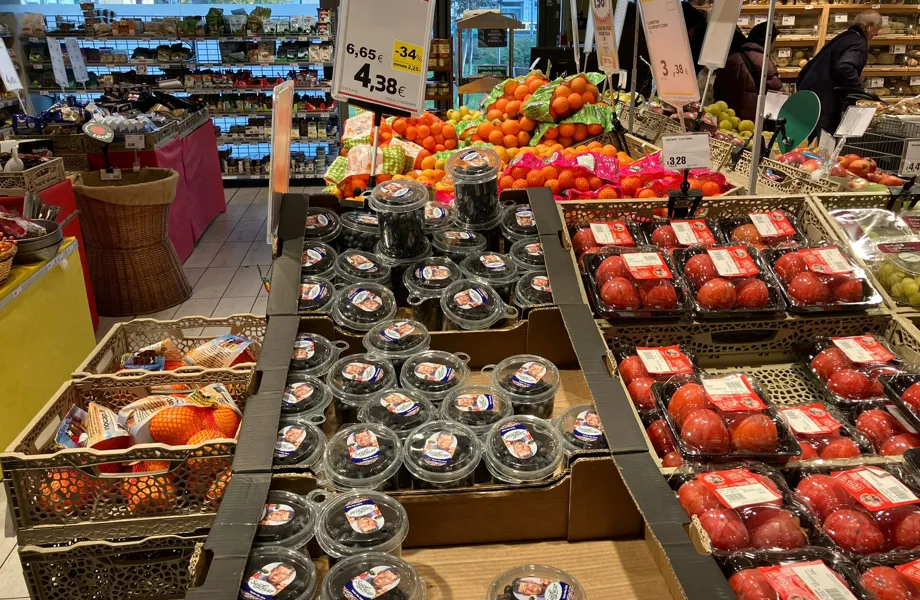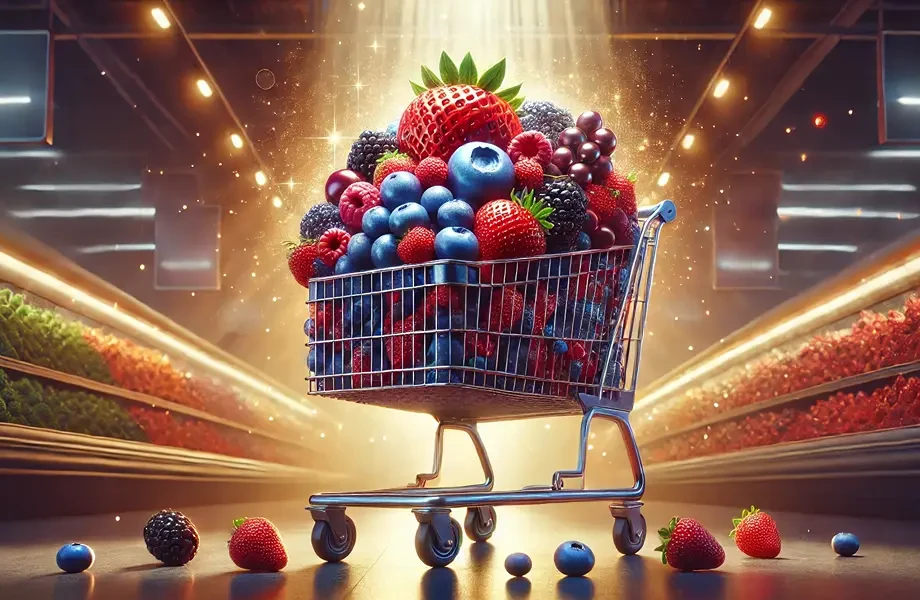Berries are standing out in the market with a performance that surpasses most categories in the fruit and vegetable section, while still leaving room for significant growth. Sales show a double-digit trend, despite prices being significantly higher than the section's average. Even in discount stores, which are typically very price-sensitive, growth is remarkable. Among the products, blueberries continue to dominate, but berry mixes show particular appeal to customers.
Berries have great potential, often still untapped in the retail chains. Display spaces dedicated to them are often limited and poorly visible, especially compared to more established categories in the Italian market or the same category in other countries, particularly Anglo-Saxon ones. Italian consumer interest is now evident: berries have become a “must-have” and rarely go missing from shelves, except due to stock shortages.

Small but Essential
Berry sales in the fruit and vegetable section still represent a small share, often less than 2% of the total value (and, in terms of volume, given the price per kilogram, the percentage is even lower). The impact of unsold products can also raise concerns, leading stores to limit displays and favor fast turnovers, occasionally risking stock shortages.
However, in recent years, sales of these berries have remained at interesting levels, showing an upward trend, as confirmed by data for the first ten months of 2024 from the Italian retail chains (which we will soon analyze in detail).
It is now widely recognized that berries are rich in valuable nutrients, enough to be classified as real “superfoods.” This, combined with their exceptional organoleptic qualities, has helped sustain sales, even during periods characterized by a strong presence of imported references.
Ultimately, the berry segment presents significant potential, which could be enhanced with bolder and more targeted strategies.

Sales Trends
In the first ten months of 2024, retail chains recorded double-digit growth, with a +15% increase in both value and volume, despite a slight slowdown in the last two and a half months. The variation in the average price of the mix was negligible, but the level remains significantly higher than the section's average: 16 euros per kilogram, compared to just over 3 euros per kilogram for pre-packaged fruit and vegetables in the same period (a value that drops further when considering variable weight).
Analyzing the various sales channels, the dominant role of supermarkets emerges, absorbing 60% of berry volumes. In second place is the discount channel, with a 24% share, leveraging price to offer the category at a lower average mix price (13 €/kg). Particularly noteworthy is the significant growth of the discount channel in the berry segment: +48% from January to October, a trend far exceeding that of other channels. This result stands out, especially compared to hypermarkets, which saw a 1% decline.

Market Shares
The growing role of the discount channel becomes even more evident when observing the change in shares compared to 2023: this channel's share increased from 18% to 24% in volume in 2024. This data highlights how the discount channel is decisively investing in the category, expanding its assortment with new references, such as mixes, and dedicating significant display spaces, even outside the refrigerated walls traditionally used to extend shelf life. The growth in the discount channel’s share occurs mainly at the expense of supermarkets (-3 points) and hypermarkets (-1 point).
Concluding the analysis, we observe the main product families sold in hypermarkets and supermarkets. For several years, blueberries have been confirmed as the leading species, representing 60% of the value of berry sales. They are followed by raspberries (22%) and mixes (10%), which stand out as the most interesting novelty thanks to positive trends: +11% in volume and +23% in value, with a clear appreciation of the offer, well-received by consumers.

Prices and Segmentation
Despite the growth of mixes, blueberries remain the pillar of the category, with a 9% increase in volume and a 12% increase in value. On the other hand, raspberries and red currants show a decline in volumes (-2% and -6%, respectively), while blackberries continue to perform well, with a +6% growth.
Regarding the average mix price, the family with the highest sales volume also offers the most purchasing options for customers. Blueberries have a lower average price compared to other product families (15 €/kg), thanks to a wider range of references, segmented by price range. Raspberries and red currants record the highest average prices (23 €/kg), while mixes and blackberries are positioned at intermediate levels (19 €/kg).
Source: IFN










